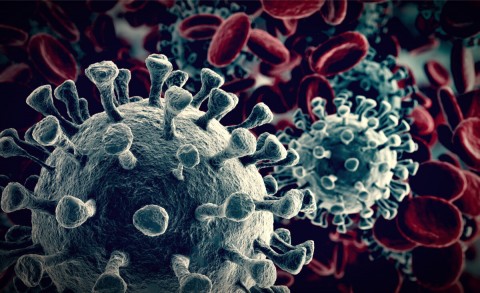Amid the current coronavirus pandemic there is a shortage of protective masks, especially the very protective N95 mask. In response, America Makes, a national accelerator for additive manufacturing and 3D printing, created a competition: the Fit to Face Challenge. Participants had one week to create a mask that provides continuous contact for a wide range of face types. Kenji Shimada, a Carnegie Mellon University professor of mechanical engineering, and Ph.D. student Erica Martelly submitted a mask that was named one of two top designs.
Shimada and Martelly’s design, called the Moldable Mask, is unique in that it can be shaped to adjust to the wearer’s face, creating a seal to keep the virus out. Usually, Martelly’s research focuses on CPAP masks for sleep apnea — specifically how to get a better fit. She had been considering using hot water to make masks pliable in her research, so when she pivoted her focus to help the fight against coronavirus, it was a perfect opportunity to test the idea.
Erica Martelly and Kenji Shimada created a prototype for a moldable mask.
“I knew from making CPAP masks that it is very difficult to create a shape that fits everyone’s face and is without leakage,” Martelly said. “With that in mind, both Professor Shimada and I knew a good element to include would be the ability to customize the mask in an easy and quick way, which can be achieved using hot water and printing with a low melting point plastic.”
The Moldable Mask is made of two parts: the mask body and the filter cage. When heated, the plastic becomes pliable and the mask body can be molded to the contours of the wearer’s face. Once a strap and a small square of N95 filter material are added, the mask is ready to protect the wearer against coronavirus.
Inspiration for the Moldable Mask came from the Montana Mask, another 3D printed mask designed to conserve N95 material. Both masks allow N95 material to be used more efficiently, meaning one N95 mask can supply material for multiple uses in their designs. However, the Montana Mask is not moldable like Shimada and Martelly’s mask.
The Moldable Mask will be fast-tracked through the VA, FDA and NIH testing and evaluation process. In addition, Shimada and Martelly plan to make the design accessible to anyone with a 3D printer.
“We have shared our design on the university webpage, along with the CAD data and instructions for hot-water molding,” Shimada said. “As we improve our design over the summer, we will update the information on the web so that medical institutions and individuals can freely create their custom-fit masks.”


